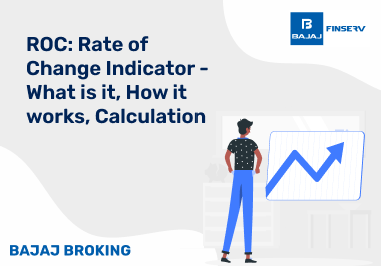Some tools for options trading are made to handle big market swings, while others are made to handle quiet times. The Butterfly Options Strategy fits perfectly into the second group. It’s a specific, multi-leg approach that traders use when they don't expect a stock's price to move much.
Think of it as a plan for a market that doesn't move much or is stable. The main idea behind the Butterfly Options Strategy is to set up a position with a very specific profit-and-loss profile, even though it may sound complicated. This method is known for having a clear risk, which means you know how much you could lose.
To understand the Butterfly Options Strategy, you need to learn how to put together different options to reach a specific price goal.
What is the Butterfly Options Strategy?
The Butterfly Options Strategy is a neutral, market-agnostic method that combines four options contracts with three different strike prices at its core. It is meant to make money when the price of the underlying asset is exactly at the middle strike price on the expiration date.
The strategy gets its name from the way the profit/loss graph looks like a butterfly's body and wings. This structure is created by buying two options at the outer strike prices (the 'wings') and selling two options at the middle strike price (the 'body').
The main goal of a standard Butterfly Options Strategy is to profit from low volatility and the passage of time.
How Is a Butterfly Spread Constructed?
To make a butterfly spread, you need to put together four options contracts with the same expiration date but three different, equally spaced strike prices. It is a four-legged strategy that sets up a position with a certain level of risk and reward, which is great for markets that are expected to be stable. The long call butterfly is a common structure.
This is how it usually goes together:
Purchase one call option with a reduced strike price (in-the-money). This forms one of the 'wings'.
Sell two call options at a middle strike price (at-the-money). This forms the 'body' and is where maximum profit is achieved.
Buy one call option at a higher strike price (out-of-the-money). This forms the other 'wing'.
This combination leads to a net debit, which is the maximum money you could lose on the trade.
Types of Butterfly Strategies
The butterfly structure is flexible and can be changed to fit the trader's view and the options they choose. The Butterfly Options Strategy has four main versions.
Long Call Butterfly
This is the standard version of the strategy, built entirely with call options. It is a neutral strategy used when a trader expects very little price movement in the underlying asset.
The goal is for the asset price to be exactly in the middle of the strike price when it expires. The risk is only the first net debit paid to get into the position, and the profit is also limited.
Long Put Butterfly
Functionally identical to the long call butterfly, this version is constructed using put options instead of calls. It also has a neutral outlook, profits from low volatility, and is designed for a stock that is expected to trade in a narrow range.
The risk and reward profiles are the same as its call counterpart, with both being strictly limited.
Short Butterfly Spread (or Reverse Butterfly)
This strategy is the mirror opposite of a long butterfly and is used when a trader expects high volatility—a significant price move in either direction. It is created by doing the reverse of a long butterfly: selling the outer wings and buying the middle body.
This results in a net credit. If the stock price moves a lot away from the middle strike, you make money. If it stays the same, you lose money.
Iron Butterfly
The Iron Butterfly is another neutral, low-volatility strategy, but it uses both puts and calls to work. It means selling a call and a put that are both at-the-money and buying a call and a put that are both out-of-the-money.
This combination creates a position that results in a net credit. Its profit graph and objective are nearly identical to a long butterfly: to profit when the underlying asset stays near the middle strike price.
Real-life Examples of the Butterfly Option Strategy
Here are some applications of the Butterfly Options Strategy that represent how it might be employed in various market conditions:
Example 1: Using a Call Butterfly Spread
Suppose a stock is trading at ₹100. An investor, believing the price will not move much, establishes a long call butterfly. They could buy a ₹95 call, sell two ₹100 calls, and buy a ₹105 call. If the stock closes at exactly ₹100 on expiration, you will make the maximum money.
Example 2: Butterfly Spread Using Puts
A trader thinks that a stock that costs ₹50 will stay the same. They can make a put butterfly spread by buying a ₹45 put, selling two ₹50 puts, and then buying a ₹55 put. The maximum profit is achieved if the stock is at or very near ₹50 by the expiration date.
Example 3: Short Call Butterfly for High Volatility
If a trader thinks a stock trading at ₹120 is going to make a significant move, they could use a short call butterfly. This would involve selling a ₹115 call, buying two ₹120 calls, and selling a ₹125 call. A profit is made if the stock price moves substantially higher or lower than the central strike prices.
Example 4: Adjusting a Butterfly Spread
A butterfly strategy can be adjusted. If an investor has a butterfly at ₹100 and the stock price goes up to ₹105, they might "roll" the position up by closing the first trade and opening a new one centred at ₹105. This keeps the profit range in line with the new stock price.
How Does One Establish a Butterfly Option Trade?
There are a few important steps to take when setting up a butterfly options trade:
First, choose an asset that you think will have either low volatility (for a long butterfly) or high volatility (for a short butterfly).
Next, find three strike prices that are the same distance apart: a lower, a middle, and an upper strike.
Choose a single expiration date that all four option contracts will share.
Execute all four legs of the trade simultaneously to ensure the correct structure is in place.
Finally, keep an eye on the asset's price and the position's value as the expiration date gets closer.
Benefits of the Butterfly Spread Option Position
These benefits are why so many people who are willing to trade options are interested in the butterfly spread:
Low-risk profile: This butterfly option strategy has a low-risk profile because the loss is limited to the net premium paid.
Affordable: Compared to other option strategies, this one is cheap, but it does happen at a relatively low upfront cost, so it definitely spreads to many investors.
Good strategy: In a market with low volatility, this is a good strategy because the price of the asset won't change much, which means you'll make money from low volatility.
The butterfly option strategy is a good choice for investors who want to control their risk and reward because of these benefits.
Additional Read: Difference Between Sensex and Nifty
Butterfly Option Strategy Risks Involving
The butterfly option strategy is not very risky, but it does have some drawbacks. Here are some:
Limited Profit Potential: The butterfly strategy only lets you make a certain amount of money. Traders who want higher returns might not find this very appealing.
Time Decay: Options lose value when they expire. If the asset never trades at the target price, this could hurt the profit margin. This works well when a trader can reach the price range in the time frame given; otherwise, he could lose money.
This information is important for all traders who use the butterfly option strategy because it helps them make decisions based on market conditions and their own risk tolerance.
Conclusion
Investors may make more money with strategies focused on low or high volatility by using this strong options trading strategy. These are the ways to trade options that depend on certain sorts of spreads.
It has a low risk and a modest chance of making money; therefore, it's good for traders who want to make money while staying within certain price ranges without taking on too much risk.
An investor may use the butterfly options trading technique to improve their trading portfolio and react to changing market circumstances if they know what it is, how it works, what its pieces are, what its benefits and hazards are, and what its types are.














